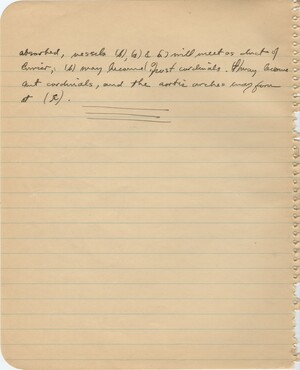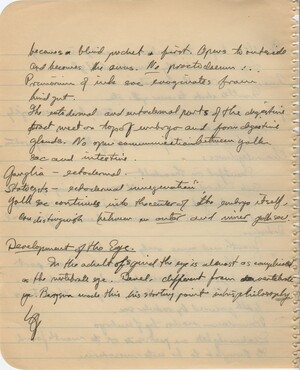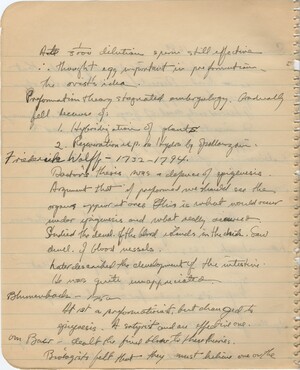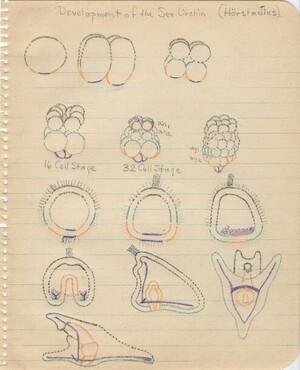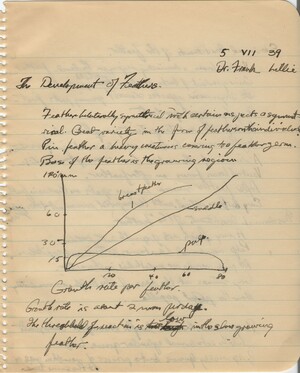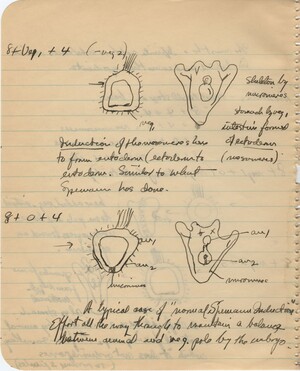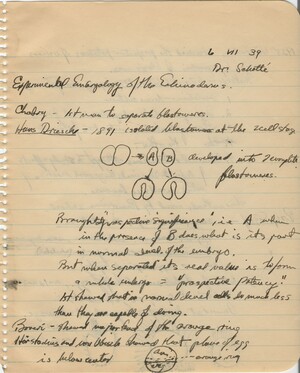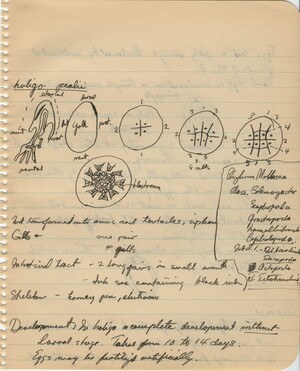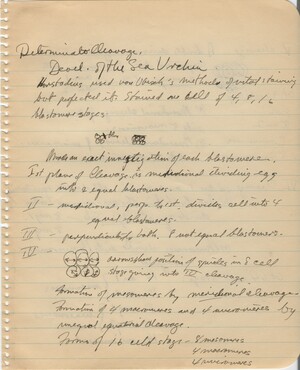Notes
Notes from Hubert Goodrich's lecture. Trinkaus finishes his notes on the 'Development of the Circulatory System of Teleost' from page 25 and 26 with the end of the description of stage XIV
Notes from Viktor Hamburger's lecture. Trinkaus continues his notes on the anatomy of Longfin shore squid (Loligo pealeii) from pages 44-48, and begins a new section, "Development of the Eye" about the squid
Notes from Charles Packard's lecture. Trinkaus continues his notes from Packard's morning lecture on the history of embryology (begin page 81) with continued notes on Spallanzani's work, Wolff, Blumenbach, and von Baer
Notes from Oscar Schotte's lecture. Trinkaus creates color diagrams of the 'Development of the Sea Urchin (Horstadius)'
Notes from William Ballard's lecture. Trinkaus continues his notes on different developmental patterns of coelenterates from page 42.
Notes from Frank Lillie's lecture. Trinkaus begins his notes on Lillie's lecture on 'The development of feathers' with some information about how feathers grow (including a graph)
Notes from Oscar Schotte's lecture. Trinkaus continues his notes from the previous page on recombination experiments for the different cell stages (with diagrams)
Notes from Oscar Schotte's lecture. Trinkaus continues his notes on animalization with diagrams and information about different compounds (includes diagrams), and notes on Runstrom's and Lindahl's experiments
Notes from Oscar Schotte's lecture. Trinkaus begins his notes on 'Experimental embryology of the Echinoderms" with historical background from Hans Driesch (with diagram), Boveri, and Horstadius
Notes from Viktor Hamburger's lecture. Trinkaus continues his notes on the anatomy of Longfin shore squid (Loligo pealeii) from pages 44-47
Notes from Viktor Hamburger's lecture. Trinkaus takes notes (with diagrams) on early development and anatomy of the Longfin shore squid (Loligo pealeii)
Notes from Oscar Schotte's lecture. Trinkaus takes notes on 'Determinate Cleavage' and the 'Devel. Of the Sea Urchin', including information on the the first 4 stages of cleavage

